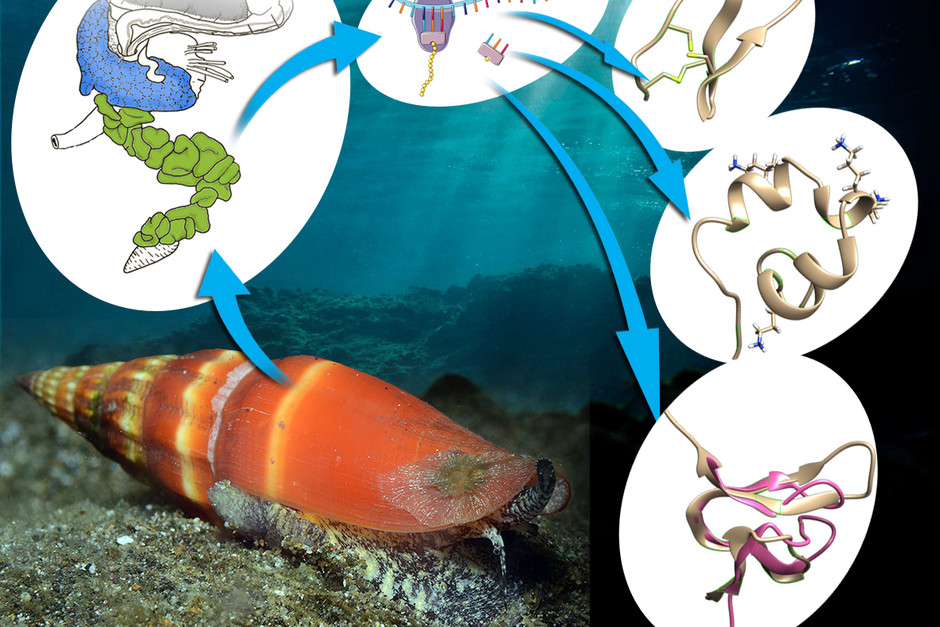Forskningsområden: Zoologi
Forskningsämnen: Biodiversitet, Evolution, Taxonomi & artbeskrivning
Project overview
Project period: 2020 - 2029
Participating departments from the museum: Department of zoology
Venoms are mixtures of physiologically active components that are used by animals to affect physiology and/or behavior of other animals. Being slow in motion, many neogastropods have developed venoms as biochemical adaptations to mediate interactions with their preys and predators. Deadly venoms of cone-snails comprising diversified neuropeptides, conotoxins, are the best-known example of these biochemical adaptations.
However, clues from anatomy suggest that some other neogastropod lineages independently evolved similar molecular weaponry. In the present project, we apply integrated VENOMICS approach to systematically explore venoms in various Neogastropoda lineages, and to gain insights into what genomic features facilitate repeated origin of venoms in this remarkable mollusk taxon.
Project description
We use a variety of high-throughput technologies: genomics, transcriptomics, and proteomics to investigate venom composition in Neogastropoda at different levels. By combining various approaches to transcriptome annotation (reference-based, structure-based, differential expression) we aim to identify the whole diversity of proteins that are expressed in a venom gland, and that function as toxins.
We model spatial conformation of the identified proteins to infer their possible functions, this is why the background knowledge of species ecology is often so helpful to propose a set of putative molecular targets. Furthermore, by examining transcriptomes of different tissues, in an array of related species, we often manage to reconstruct events underlying establishment of novel species-specific toxins that match their own unique ecological niche.
In a larger picture, we strive to link molecular evolution to diversification history of the taxa, looking for cues of evolutionary success in the venom related innovations.
Funding
European Research Council External link.
External link.
Selected publications
- Fedosov A.E. Zaharias P. & Puillandre N. (2021) A phylogeny-aware approach reveals unexpected venom components in divergent lineages of cone snails. Proceedings of the Royal Society B 288, 20211017 ss. 1-9. DOI: 10.1098/rspb.2021.1017
- Kuznetsova K.G., Zvonareva S.S., Ziganshin R., Mekhova E.S., Dgebuadze P.Yu., Yen D.T.H., Nguyen T.H.T., Moshkovskii S.A. & A.E. Fedosov. (2022) Vexitoxins: conotoxin-like venom peptides from predatory gastropods of the genus Vexillum. Proceedings of the Royal Society B. 289, 20221152 ss. 1-10. DOI: 1098/rspb.2022.1152
Contacts
External participants
In this project we are collaborating with the National Museum of Natural History (Paris, France), and with the University of Utah (Salt-Lake City).
Project manager


